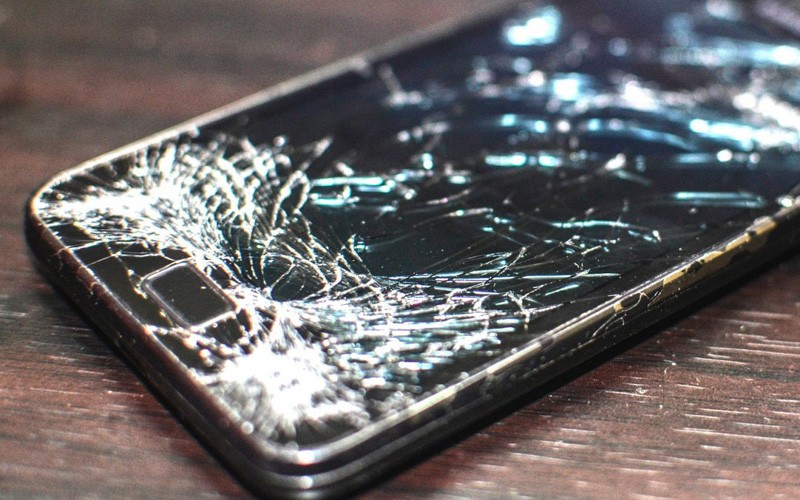The secret of impact-resistant glass lies in its atomic behavior
- December 13, 2024
- 0
Imagine a world where glasses falling off tables or onto the floor are no longer greeted with the familiar sound of breaking, but with a harmless splash. In
Imagine a world where glasses falling off tables or onto the floor are no longer greeted with the familiar sound of breaking, but with a harmless splash. In

Imagine a world where glasses falling off tables or onto the floor are no longer greeted with the familiar sound of breaking, but with a harmless splash. In this world, your smartphone’s screen remains intact even after an unfortunate accident. While this may seem too good to be true, the latest findings from researchers at Tohoku University bring us one step closer to this extraordinary reality.
The research offers a fascinating insight into the science behind the durability of glass and transforms our understanding of this common but remarkable material. With these advances, everyday accidents can quickly turn into minor inconveniences rather than expensive repairs.
In an article published in the journal Acta MaterialiaA multi-institutional research team led by Tohoku University has shared new results from their study on the movement of atoms in glass. Experts have discovered that the interesting dance of atoms in glass is key to its ability to resist breakage.
“Despite its strength, glass is prone to breaking when the stress exceeds the permissible value, but interestingly, the movement of atoms and molecules inside the glass can relieve the internal stress, making the material more resistant to breakage,” said Makina Saito. Associate professor at Tohoku. University School of Sciences.
Apparently, the process of atoms “jumping” into nearby empty spaces is what makes glass more stable, a phenomenon that has long puzzled scientists.
The team used innovative experiments with synchrotron radiation and clever computer simulations to unlock these secrets of atomic motion. This allowed the researchers to observe the behavior of the atoms in the glass on an incredibly precise time scale.
Experts found that when atoms bounce into nearby empty spaces, the surrounding group of atoms act collectively to fill the void, like a well-choreographed ballet that maintains structural integrity. This synchronized dance of atoms acts as a safety valve, dissipating internal stress and greatly reducing the likelihood of the glass cracking under external force or impact.
These groundbreaking ideas could transform industries that rely heavily on the strength of glass materials.
“Our results have far-reaching implications for industries such as consumer electronics, construction and automotive where shatter-resistant glass is required,” commented Saito.
The Tohoku University team doesn’t stop there. They aim to investigate whether similar atomic mechanisms are at work in other types of glass. Their ultimate mission? Setting universal standards for the development of glasses with superior impact resistance, potentially revolutionizing the use of this common but unique material.
This discovery could play a crucial role in the development of environmental materials science. Glass is already a widely used and recyclable material, but making glass more durable could significantly reduce waste from broken items such as phone screens, windows and household items. By creating materials that last longer and require less frequent replacement, researchers are contributing to a future with reduced environmental impact and reduced resource consumption.
Additionally, fewer parts changes mean less energy and raw materials are needed for production, further reducing the environmental footprint. This innovation could also inspire the adoption of sustainable practices in glass-based industries and increase the impact on global sustainable development goals.
The implications of this research go far beyond glass, touching a wide range of materials and industries. Methods used to analyze the movement of atoms can inspire the discovery of other materials, such as ceramics or polymers, where improving stress resistance and durability are priorities for both performance and safety. Additionally, understanding the behavior of atoms in glass could influence the development of advanced materials designed for harsh environments, including aerospace, defense and medical applications.
For example, toughened glass can be used in spacecraft windows to provide greater safety in harsh environments. It can be used to produce bulletproof shields that provide greater reliability, or even surgical instruments that combine durability with precision.
These advances have the potential to redefine the boundaries of materials science, opening the door to innovations previously thought unattainable, while also expanding their applications across industries and improving everyday technology. The full text of the research was published in the journal Acta Materiala.
Read PortalTele on GOOGLE NEWS
Source: Port Altele
As an experienced journalist and author, Mary has been reporting on the latest news and trends for over 5 years. With a passion for uncovering the stories behind the headlines, Mary has earned a reputation as a trusted voice in the world of journalism. Her writing style is insightful, engaging and thought-provoking, as she takes a deep dive into the most pressing issues of our time.